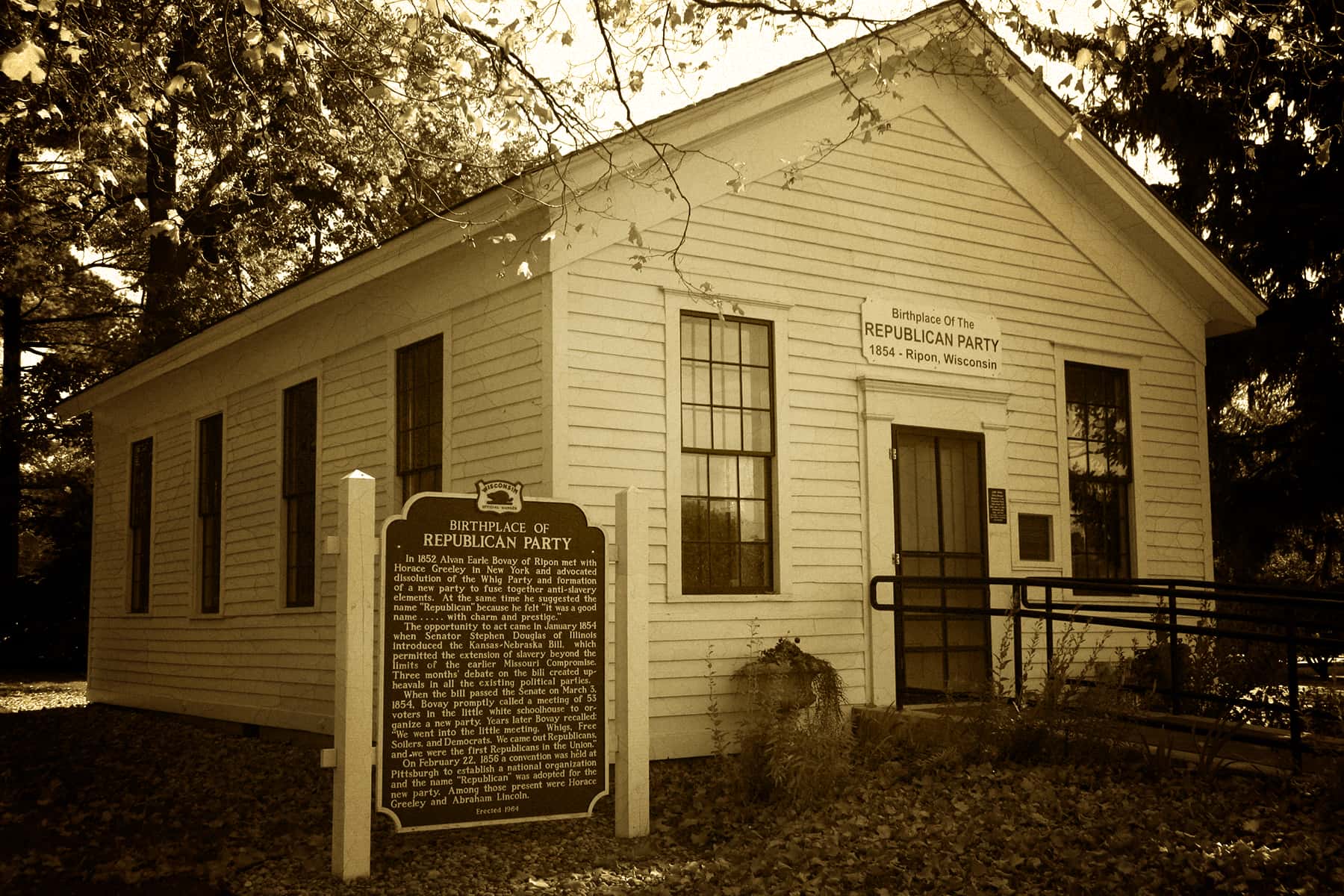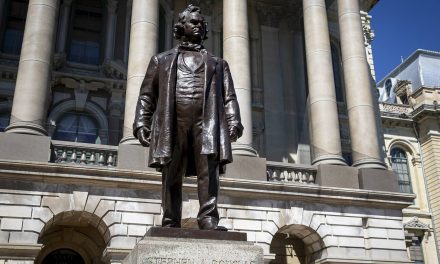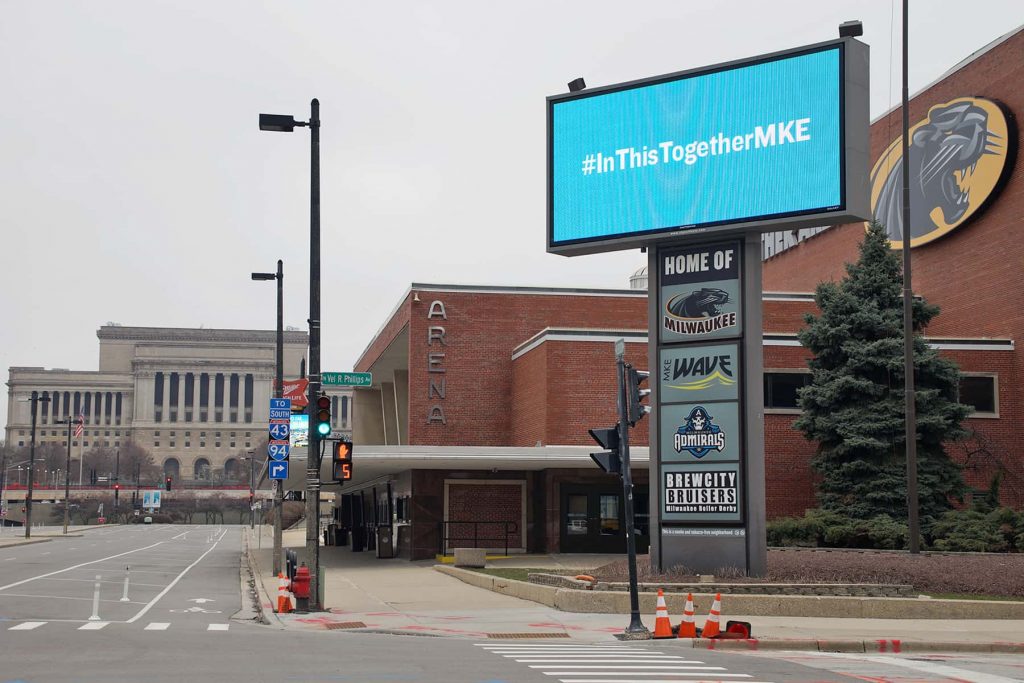
I spent much of April 5 thinking about the Republican Party. Its roots lie in the immediate aftermath of the passage of the Kansas-Nebraska Act in spring 1854, when it became clear that elite southern slaveholders had taken control of the federal government and were using their power to spread their system of human enslavement across the continent.
At first, members of the new party knew only what they stood against: an economic system that concentrated wealth upward and made it impossible for ordinary men to prosper. But in 1859, their new spokesman, Illinois lawyer Abraham Lincoln, articulated a new vision of government. Rather than using government power solely to protect the property of wealthy slaveholders, Lincoln argued, the government should work to make it possible for all men to get equal access to resources, including education, so they could rise to economic security.
As a younger man, Lincoln had watched his town of New Salem die because the settlers in the town did not have the resources to dredge the Sangamon River to increase their river trade. Had the government simply been willing to invest in the economic development that was too much for the willing workers of New Salem, it could have brought prosperity to the men who, for lack of investment, failed and abandoned their town. The government, Lincoln thought, must develop the country’s infrastructure.
Once in power, the Republicans did precisely that. After imposing the first national taxes, including an income tax, lawmakers set out to enable men to be able to pay those taxes by using the government to give ordinary men access to resources. In 1862, they passed the Homestead Act, giving western land to anyone willing to settle it; the Land-Grant College Act, providing funds to establish state universities; the act establishing the Department of Agriculture, to provide scientific information and good seeds to farmers; and the Pacific Railway Act, providing for the construction of a railroad across the continent to get men to the fields and the mines of the West.
In 1902, Republicans fascinated with infrastructure projects joined forces with southern Democrats desperate for flood control to pass the Newlands Reclamation Act. Under the act, the federal government built more than 600 dams in 20 western states to bring water to farmland. “The sound and steady development of the West depends upon the building up of homes therein,” President Theodore Roosevelt wrote. Water from the western dams now irrigates more than 10 million acres, which produce about 60% of the nation’s vegetables and 25% of its fruits (and nuts).
Democratic President Franklin Delano Roosevelt combined this focus on infrastructure development with the need for work relief programs during the Depression to create the 1933 Civilian Conservation Corps, which planted trees, built fire towers, built trails, stocked fish, and so on. In 1935, Congress created the Works Progress Administration. During its existence, it employed about 3 million workers at a time; built or repaired more than 100,000 public buildings, including schools and post offices; and constructed more than 500 airports, more than 500,000 miles of roads, and more than 100,000 bridges. It also employed actors, photographers, painters, and writers to conduct interviews, paint murals of our history, and tell our national story.
As the country grew and became more interconnected, pressure built for a developed road system, but while FDR liked the idea of the jobs it would produce, building the road fell to Republican President Dwight Eisenhower. Three years after he became president, Eisenhower backed the 1956 Federal-Aid Highway Act, saying, “Our unity as a nation is sustained by free communication of thought and by easy transportation of people and goods.” The law initially provided $25 billion for the construction of 41,000 miles of road; at the time, it was the largest public works project in U.S. history.
In America today, there is good news. The Biden administration has rolled out vaccines at a faster pace than anyone foresaw. On April 5, President Biden announced that health care workers have administered 150 million doses of the vaccine and, at an average of 3 million shots a day, they are on track to administer 200 million by his 100th day in office. He is moving the date for states to make all adults eligible for a vaccine from May 1 to April 19.
The vaccines have dovetailed with the $1.9 trillion American Rescue Plan from last month and the spring weather to speed up the economic recovery. Economists had expected a job gain of about 660,000 in March, but nonfarm payrolls actually rose by about 916,000. And now Biden has rolled out a dramatic new infrastructure proposal, the $2 trillion American Jobs Plan.
So why was I thinking about the Republicans in this moment?
Republican lawmakers seem weirdly out of step with their party’s history as well as with the country. They are responding to the American Jobs Plan by defining infrastructure as roads and bridges alone, cutting from the definition even the broadband that they included when Trump was president. (Trump, remember, followed his huge 2017 tax cuts with the promise of a big infrastructure bill. As he said, “Infrastructure is the easiest of all…. People want it, Republicans and Democrats.”) Senate Minority Leader Mitch McConnell (R-KY) warned that Biden’s plan is a “Trojan horse” that will require “massive tax increases.”
Biden has indeed proposed funding the Democrats’ infrastructure plan by raising taxes on corporations from their current rate of 21% to 28% (but before Trump’s 2017 tax cuts, that rate was 35%). It ends federal tax breaks for oil and gas companies, and it increases the global minimum tax — a tax designed to keep corporations from shifting their profits to low tax countries – from 13% to 21%.
This is in keeping with our history. Americans since Lincoln have proudly used tax dollars to develop the country. During Eisenhower’s era, the corporate tax rate was 52% (and the top income tax bracket was 91%). The Newlands Act was designed to raise money through public land sales, but in 1928, when Congress authorized what would become Hoover Dam, the Bureau of Reclamation began to operate out of the government’s general funds.
But it was Lincoln’s Republicans who first provided the justification for investing in the nation. In the midst of the deadly Civil War, as the United States was hemorrhaging both blood and money, Republican lawmakers defended first their invention of national taxes. The government had a right to “demand” 99% of a man’s property for an urgent need, said House Ways and Means Committee Chair Justin Smith Morrill (R-VT). When the nation required it, he said, “the property of the people… belongs to the [g]overnment.”
The Republicans also defended developing the country. In a debate over the new Department of Agriculture, Chair of the Senate Finance Committee William Pitt Fessenden (R-ME), famous both for his crabbiness and for his single-minded focus on the war, defended the use of “seed money.” With such an investment, he said, the country would be “richly paid over and over again in absolute increase of wealth. There is no doubt of that.”
Jоnаthunder / Wіkіpеdіа
Letters from an Аmerican is a daily email newsletter written by Heather Cox Richardson, about the history behind today’s politics














